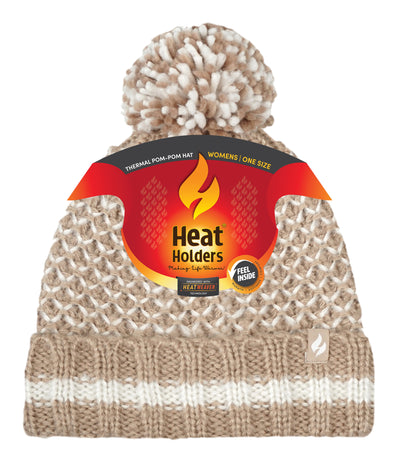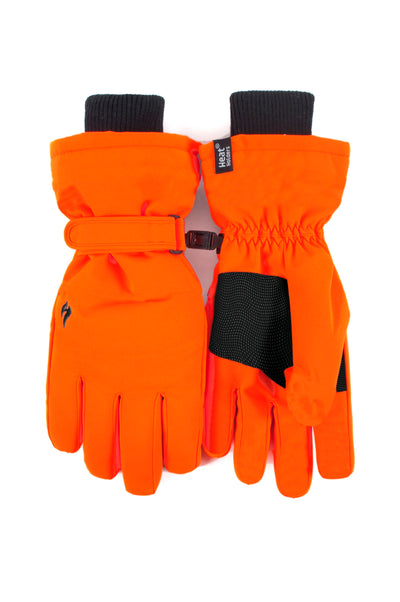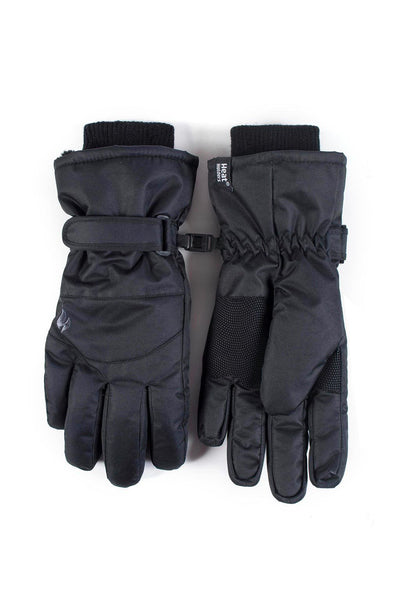The exhilarating sport of snowmobiling requires more than just a sense of adventure and a need for speed. To truly enjoy your snowmobiling experience, it is essential to stay warm and comfortable in the harsh winter conditions. In this article, we will explore the best clothing options for snowmobiling, focusing on the importance of proper attire, essential clothing items, layering techniques, and accessories for safety and comfort.
Alt text: A man snowmobiling in the mountains
Understanding the Importance of Proper Snowmobiling Attire
When it comes to snowmobiling, clothing is not just a fashion statement. It plays a crucial role in ensuring your safety, comfort, and overall enjoyment on the trails.
Picture this: you're out on a snowmobile, gliding through a winter wonderland, surrounded by breathtaking landscapes. The crisp air fills your lungs, and the adrenaline pumps through your veins. But wait, what's that? The temperature suddenly drops, and a chilling wind starts to bite at your exposed skin. Without proper snowmobiling attire, this idyllic adventure could quickly turn into a frosty nightmare.
The Role of Temperature Regulation in Snowmobiling
In the world of snowmobiling, the weather can change rapidly, and temperatures can plummet. Proper temperature regulation is key to avoiding hypothermia and other cold-related injuries. Your snowmobiling attire should provide adequate insulation to keep you warm but also allow for breathability to prevent overheating.
Imagine yourself on a long snowmobiling excursion, exploring vast snowy terrains. As you zip through the trails, your body generates heat, and sweat starts to form. Without proper breathability in your attire, this sweat becomes trapped, making you damp and uncomfortable. However, with the right gear, moisture-wicking fabrics and ventilation systems work together to keep you dry and regulate your body temperature, ensuring a comfortable and enjoyable ride.
Balancing Style and Functionality in Snowmobiling Gear
While functionality should be a top priority when choosing snowmobiling gear, there's no reason you can't look good while tearing through the winter wilderness. Today, manufacturers offer a wide range of stylish and functional snowmobiling clothing options that will keep you warm and make you look great.
Imagine yourself at a snowmobiling gear store, surrounded by racks of jackets, pants, and accessories. You browse through the latest collections, amazed by the variety of designs and colors available. From sleek and modern to bold and vibrant, there's something to suit every style preference. But it's not just about aesthetics. These fashionable pieces are engineered with high-performance materials that provide insulation, wind resistance, and waterproofing. So, not only will you be turning heads on the trails, but you'll also be protected from the elements.
As you gear up for your next snowmobiling adventure, remember that your attire is more than just a fashion statement. It's your shield against the cold, your ticket to comfort, and your key to an unforgettable experience. So, choose wisely, and embrace the perfect blend of style and functionality that snowmobiling attire has to offer.
Essential Snowmobiling Clothing Items
When it comes to snowmobiling clothing, there are a few key items that you can't afford to overlook. Whether you're a seasoned rider or just starting, having the right gear is crucial for a safe and enjoyable experience on the trails.
One of the most important pieces of snowmobiling clothing is a well-designed outer layer. Not only does it keep you warm, but it also protects you from the elements. When shopping for a snowmobiling jacket, look for one that is made from waterproof and windproof materials. This will ensure that you stay dry and comfortable, no matter how long you're out on the trails. Additionally, a jacket with adjustable cuffs, a high collar, and a removable hood will provide added versatility, allowing you to customize your level of protection based on the weather conditions.
Another essential item for snowmobiling is a good pair of snowmobiling pants. These pants are specifically designed to withstand the harsh conditions you'll encounter while riding. Look for pants that are water-resistant, durable, and insulated. The water-resistant feature will keep you dry even if you encounter wet snow or light rain. The durability of the pants is important because they need to withstand the wear and tear of riding through rough terrain.
Insulation is crucial for keeping your legs warm, especially on those cold winter days. Adjustable waistbands and reinforced knees are also important features to consider, as they provide added comfort and protection.
Keeping your hands warm and protected is essential when snowmobiling, as they are constantly exposed to the cold wind and snow. Gloves and mittens are the two main options to consider, each with its advantages. Gloves provide more dexterity, allowing you to easily operate the controls on your snowmobile. On the other hand, mittens offer better thermal insulation, keeping your hands warmer for longer periods.
When choosing gloves or mittens for snowmobiling, make sure they are waterproof and windproof. This will prevent moisture from seeping in and chilling your hands. Additionally, look for gloves or mittens with reinforced palms, as this will give you a better grip on the handlebars, ensuring safety and control while riding.
As you can see, having the right snowmobiling clothing is essential for a comfortable and safe riding experience. Whether it's a well-designed jacket, durable pants, or warm gloves/mittens, each item plays a crucial role in keeping you protected from the elements and allowing you to fully enjoy the thrill of snowmobiling.
Layering Techniques for Optimal Warmth
Layering is the key to staying warm and comfortable during snowmobiling adventures. By combining different layers, you can regulate your body temperature more effectively.
The Science of Layering for Cold Weather
Layering involves wearing multiple thin layers of clothing, each with a specific purpose. The bottom layer, known as the baselayer, should be moisture-wicking to keep your skin dry. This is crucial because when your skin gets wet, it can quickly lead to discomfort and even hypothermia in extreme cold conditions. Moisture-wicking baselayers help to pull sweat away from your body, preventing it from accumulating and making you feel cold.
The middle layer, or mid-layer, provides insulation. It acts as a barrier between the base layer and the outer layer, trapping warm air close to your body. This layer is responsible for retaining heat and keeping you warm. Popular choices for mid-layers include fleece jackets and vests, which provide excellent insulation without adding unnecessary bulk.
The outer layer, or shell, protects against wind and moisture. It serves as a shield, keeping you dry and blocking cold air from penetrating your clothing. When choosing an outer layer for snowmobiling, it's essential to opt for jackets and pants that are waterproof, windproof, and breathable. This ensures that you stay dry and comfortable, even in wet and windy conditions.
Choosing the Right Baselayers for Snowmobiling
Investing in high-quality baselayers is essential for staying warm and dry while snowmobiling. Look for baselayers made from moisture-wicking materials such as merino wool or synthetic fabrics. These materials will keep you dry by wicking away sweat from your body. Additionally, they are designed to provide insulation and regulate body temperature, ensuring that you stay warm even during intense physical activity.
Merino wool baselayers are particularly popular among snowmobilers due to their excellent moisture-wicking properties and natural odor resistance. They are soft, breathable, and provide exceptional warmth, making them ideal for cold weather activities. Synthetic fabrics like polyester and nylon are also commonly used for baselayers as they offer quick-drying capabilities and durability.
When choosing base layers, consider the fit as well. Baselayers should fit snugly against your skin without being too tight or restrictive. This allows for efficient moisture transfer and ensures optimal thermal regulation. Avoid baselayers that are too loose, as they can create air gaps, reducing their effectiveness in keeping you warm.
Midlayers and Outer Layers: A Comprehensive Guide
Choosing the right mid-layer and outer layer depends on the weather conditions and personal preferences. As mentioned earlier, fleece jackets and vests are popular choices for mid-layers, as they provide excellent insulation without adding bulk. Fleece is known for its ability to retain heat even when wet, making it a reliable choice for snowmobiling.
For extreme cold conditions, consider layering multiple mid-layers to enhance insulation. This technique allows you to adjust your clothing according to your activity level and the temperature. You can add or remove mid-layers to maintain a comfortable body temperature.
When it comes to outer layers, opt for jackets and pants that are waterproof, windproof, and breathable. Look for features like sealed seams and adjustable cuffs to ensure maximum protection against the elements. Additionally, consider the design and functionality of the outer layer. Look for features such as ventilation zippers and removable hoods that allow you to customize your clothing based on the weather conditions.
Remember, layering is not just about adding more clothing. It's about strategically selecting and combining the right materials and garments to create a system that effectively regulates your body temperature. By understanding the science behind layering and choosing the appropriate base layers, mid layers, and outer layers, you can enjoy your snowmobiling adventures in optimal warmth and comfort.

Accessorizing for Safety and Comfort
In addition to the essential clothing items, there are a few accessories that can enhance your snowmobiling experience.
When it comes to snowmobiling, safety should always be a top priority. That's why a high-quality helmet and goggles are non-negotiables. These essential accessories provide critical protection for your head and eyes, shielding you from the elements and potential hazards on the trail.
But let's not forget about comfort! Snowmobiling can be an exhilarating adventure, but it can also be quite chilly. That's where the right accessories come into play.
Helmets and Goggles: Non-Negotiables in Snowmobiling
A high-quality helmet is not just a fashion statement; it's a crucial piece of equipment that can save your life. When choosing a helmet, look for one that meets safety standards and fits snugly on your head. It should have proper ventilation to prevent fogging and a sturdy chin strap to keep it securely in place.
Goggles, on the other hand, are designed to protect your eyes from wind, snow, and debris. They should have a wide field of vision and an anti-fog coating to ensure clear visibility at all times. Some goggles even come with interchangeable lenses, allowing you to adapt to different light conditions.
Snowmobiling Boots: A Guide to the Best Footwear
When it comes to snowmobiling, your feet are your foundation. Keeping them warm and dry is essential for a comfortable and enjoyable experience. Invest in insulated, waterproof boots that are specifically designed for snowmobiling.
Look for boots with sturdy soles and good traction to prevent slips and falls. The last thing you want is to lose your footing while maneuvering your snowmobile. Additionally, boots with adjustable closures, such as laces or buckles, can provide a secure fit and prevent snow from getting inside.
Neck Warmers, Balaclavas, and More: Extra Protection for Extreme Cold
When the temperature drops to extreme lows, it's important to take extra precautions to protect your face and neck from frostbite. Neck warmers, balaclavas, and face masks are all great accessory options for added insulation and protection against wind and cold.
A neck warmer is a versatile accessory that can be worn in various ways, such as a scarf, a face cover, or even a headband. It provides an extra layer of warmth and can be easily adjusted to suit your needs.
A balaclava, on the other hand, is a full-face mask that covers your head, neck, and face. It offers maximum protection against the biting cold and wind, ensuring that you stay comfortable throughout your snowmobiling adventure.
For those who prefer a more lightweight option, a face mask can be a great choice. Made from breathable materials, it provides adequate protection while allowing for easy airflow.
Remember, accessorizing for safety and comfort is not just about looking good on the trails; it's about ensuring a safe and enjoyable snowmobiling experience. So, don't forget to invest in these essential accessories before you hit the snow-covered paths!
Conclusion
When it comes to snowmobiling, choosing the right clothing is essential for staying warm, comfortable, and safe. By understanding the importance of proper snowmobiling attire, investing in essential clothing items, mastering layering techniques, and accessorizing for safety and comfort, you can enjoy your snowmobiling adventures to the fullest. So, gear up, stay warm, and hit the trails with confidence!














